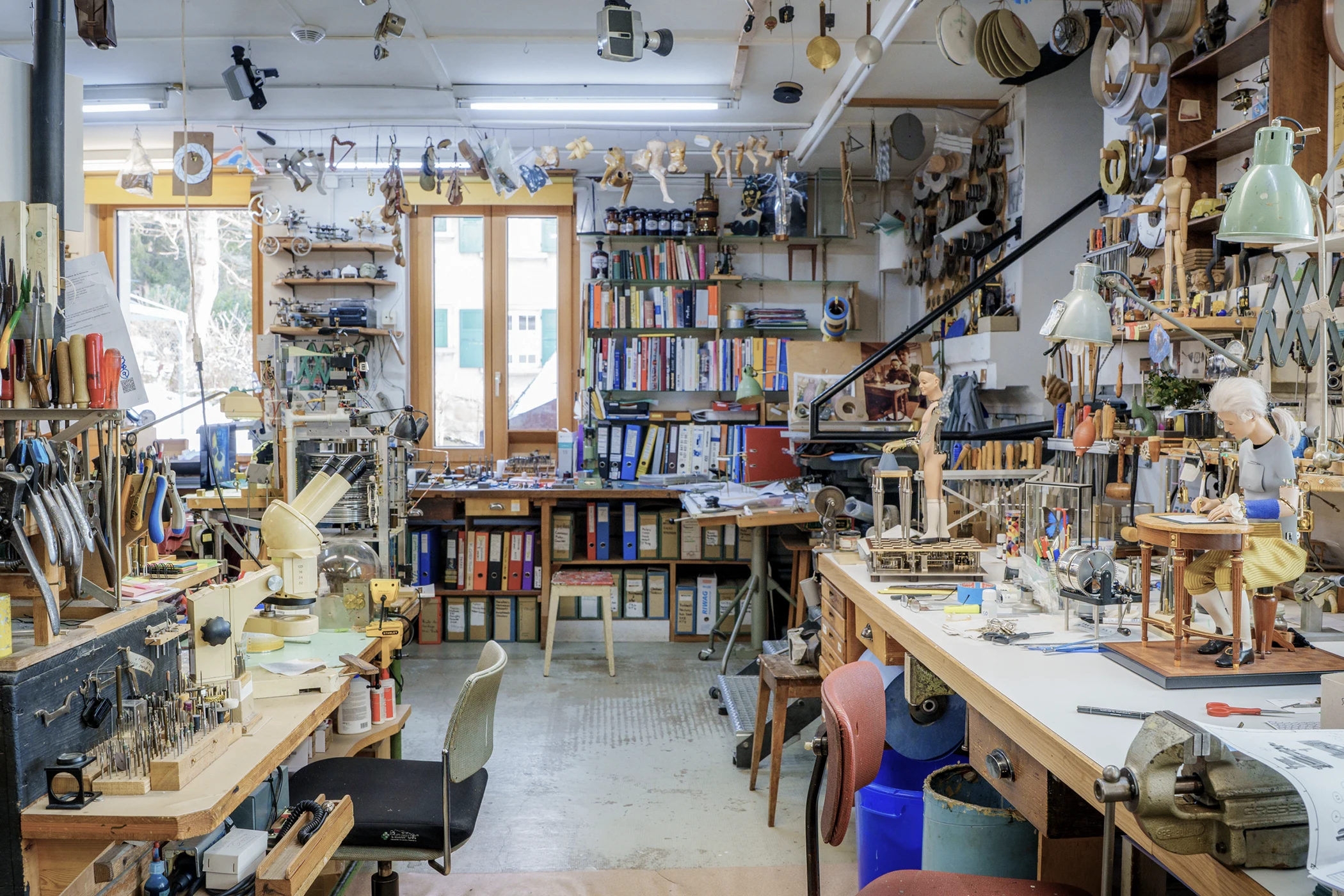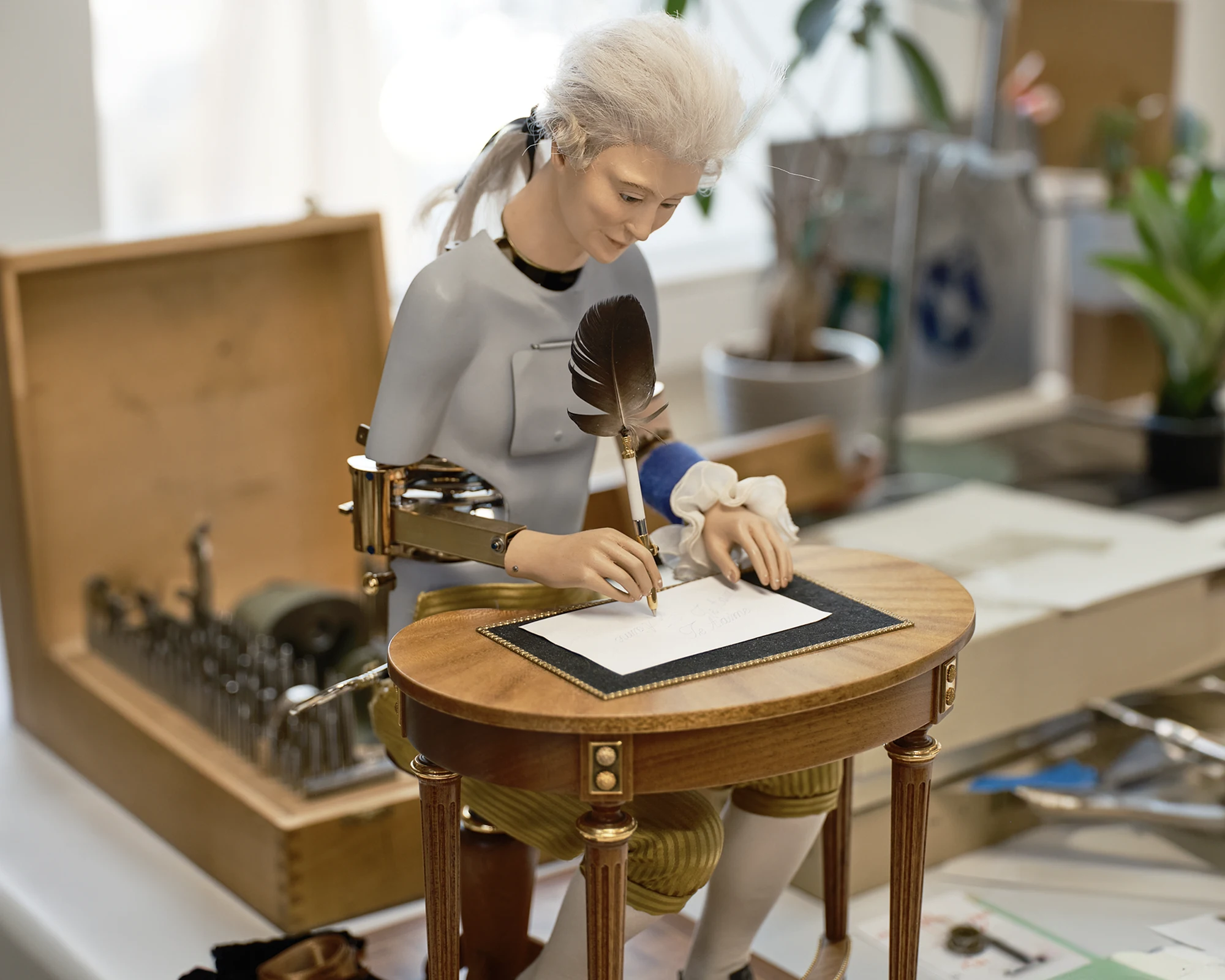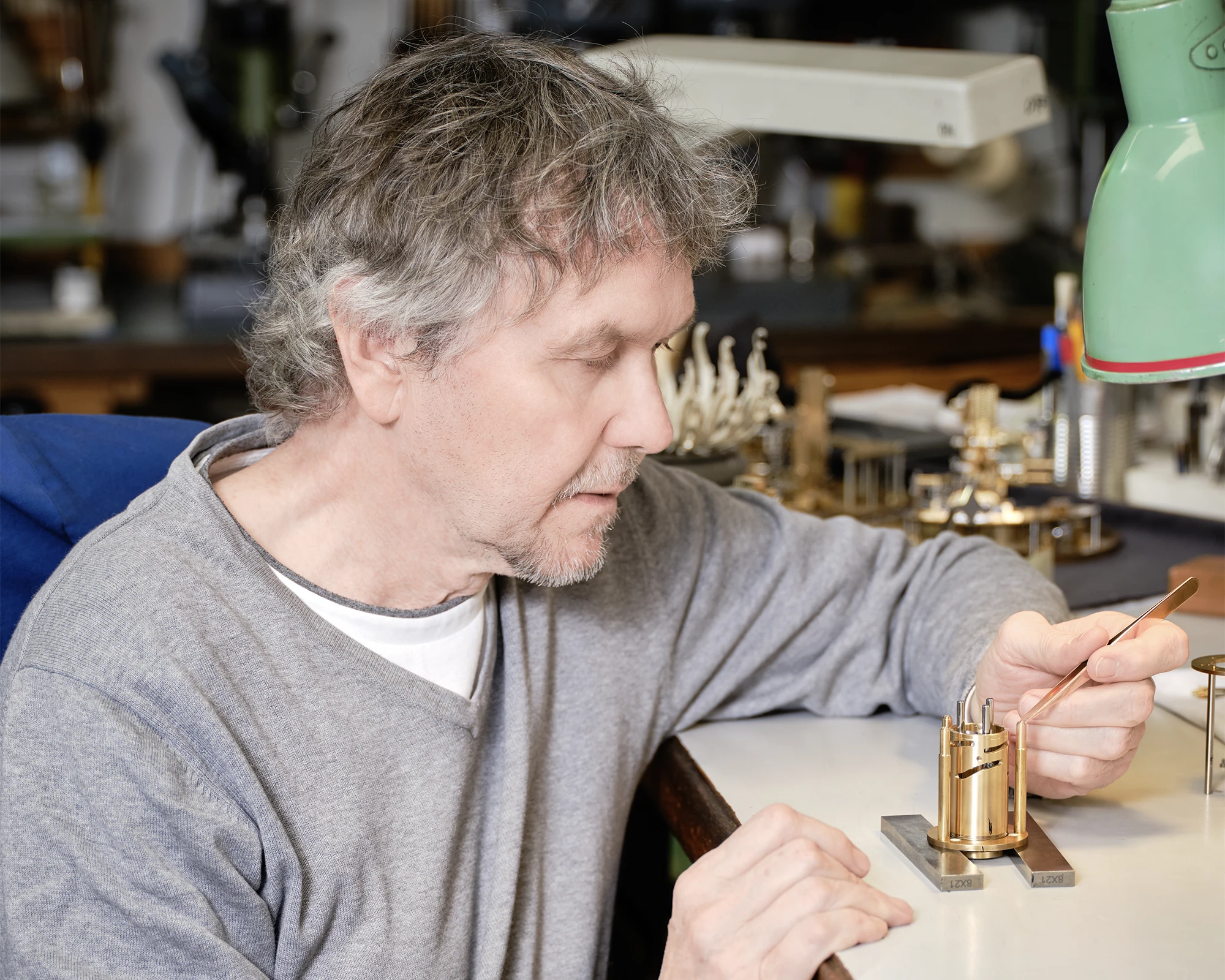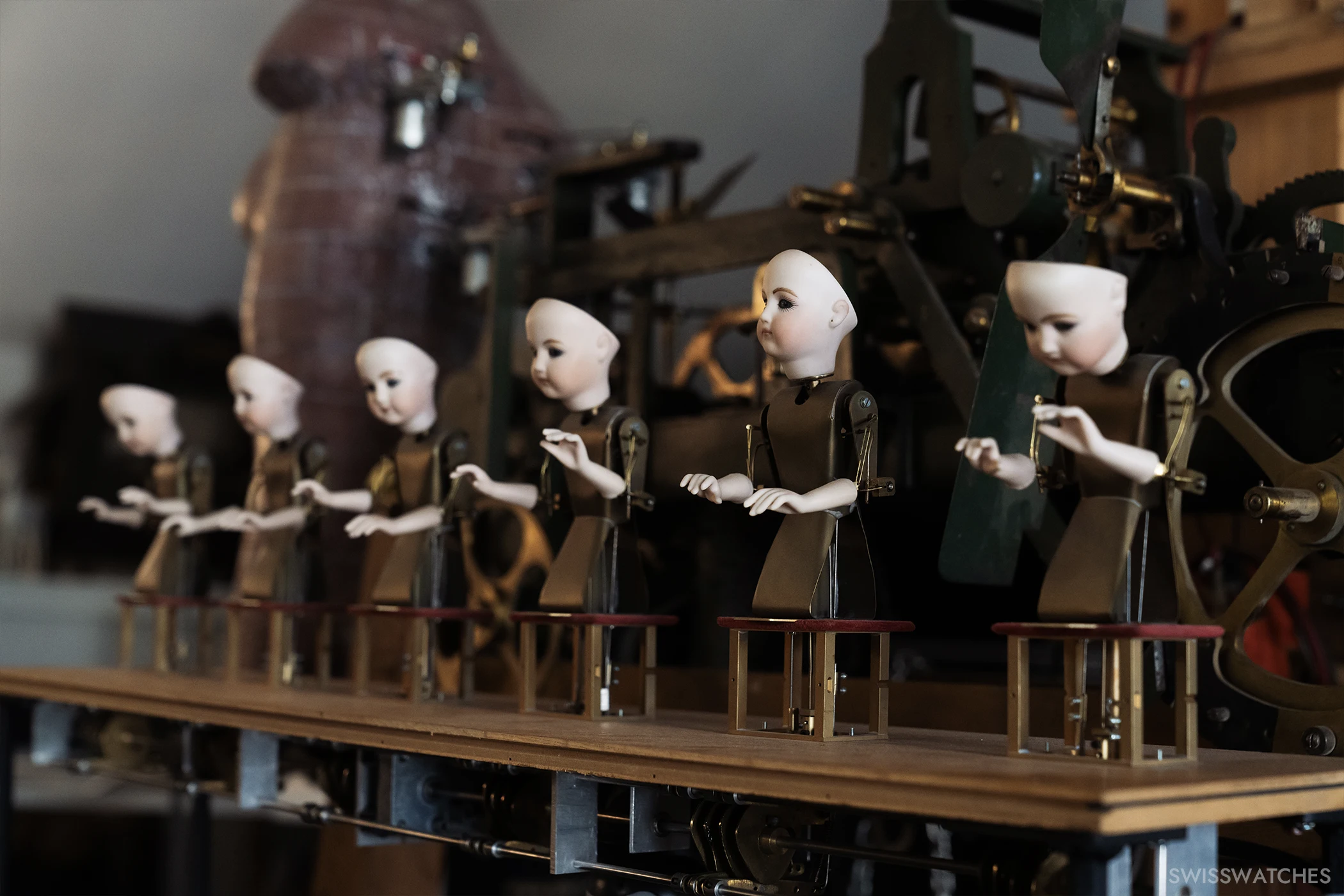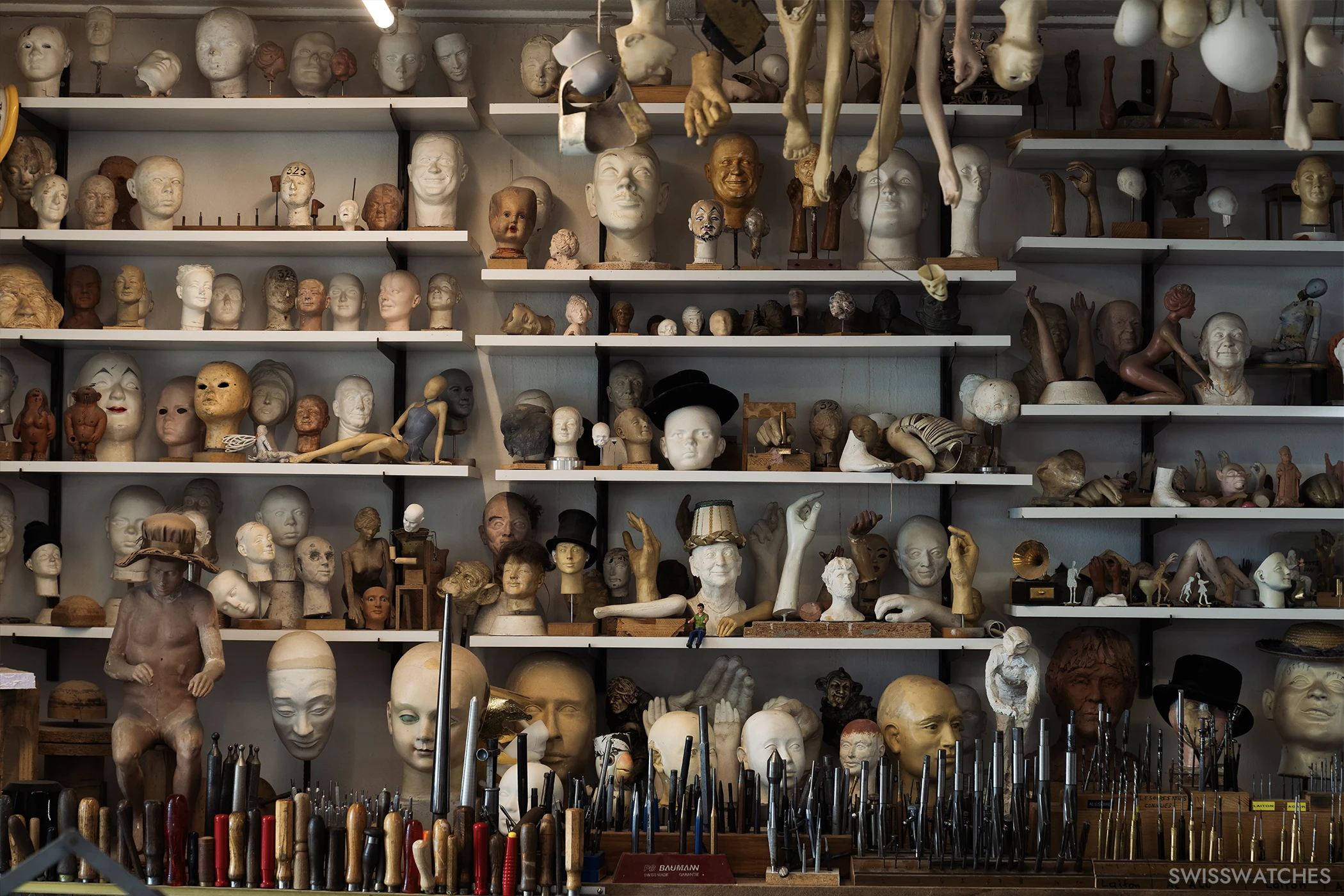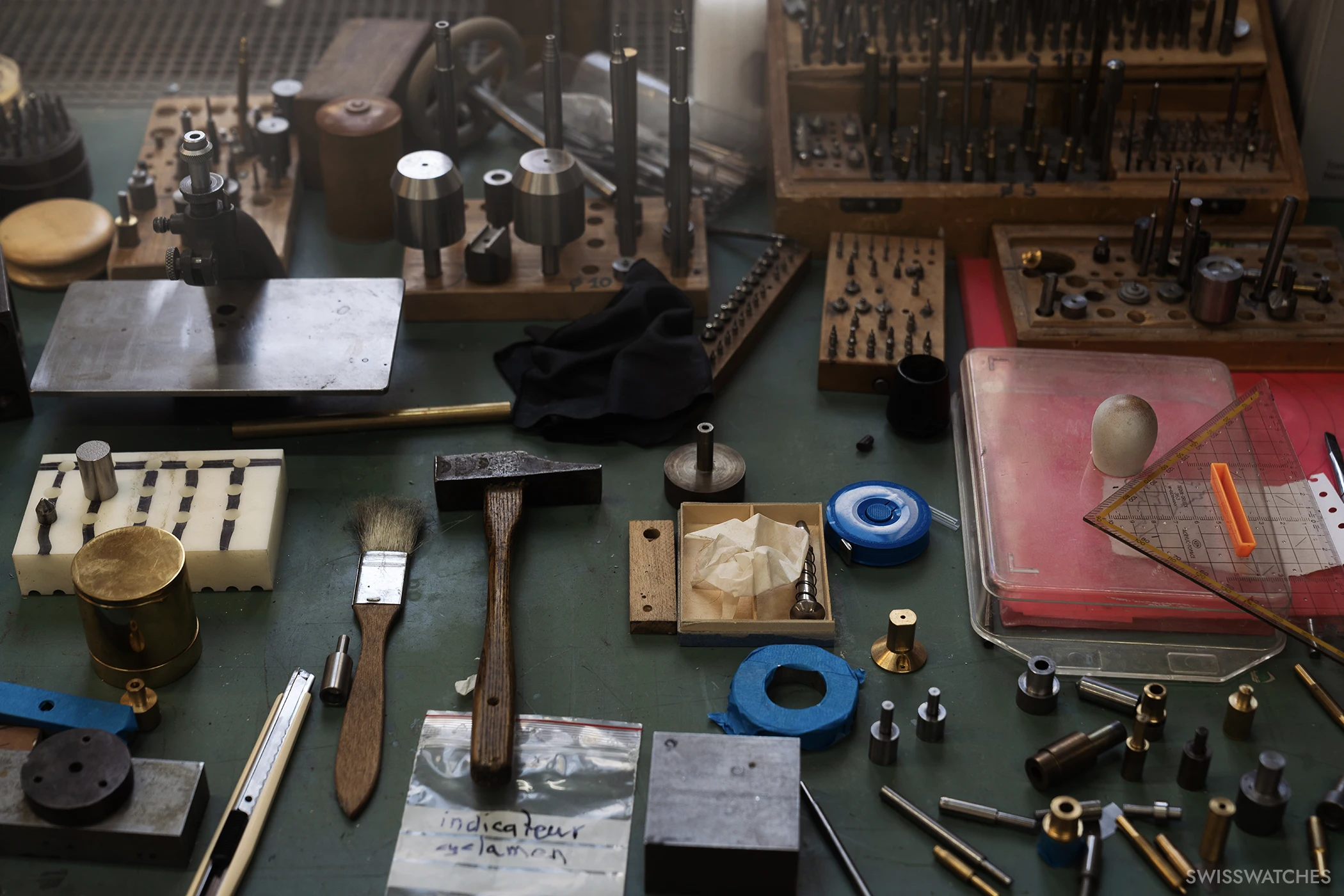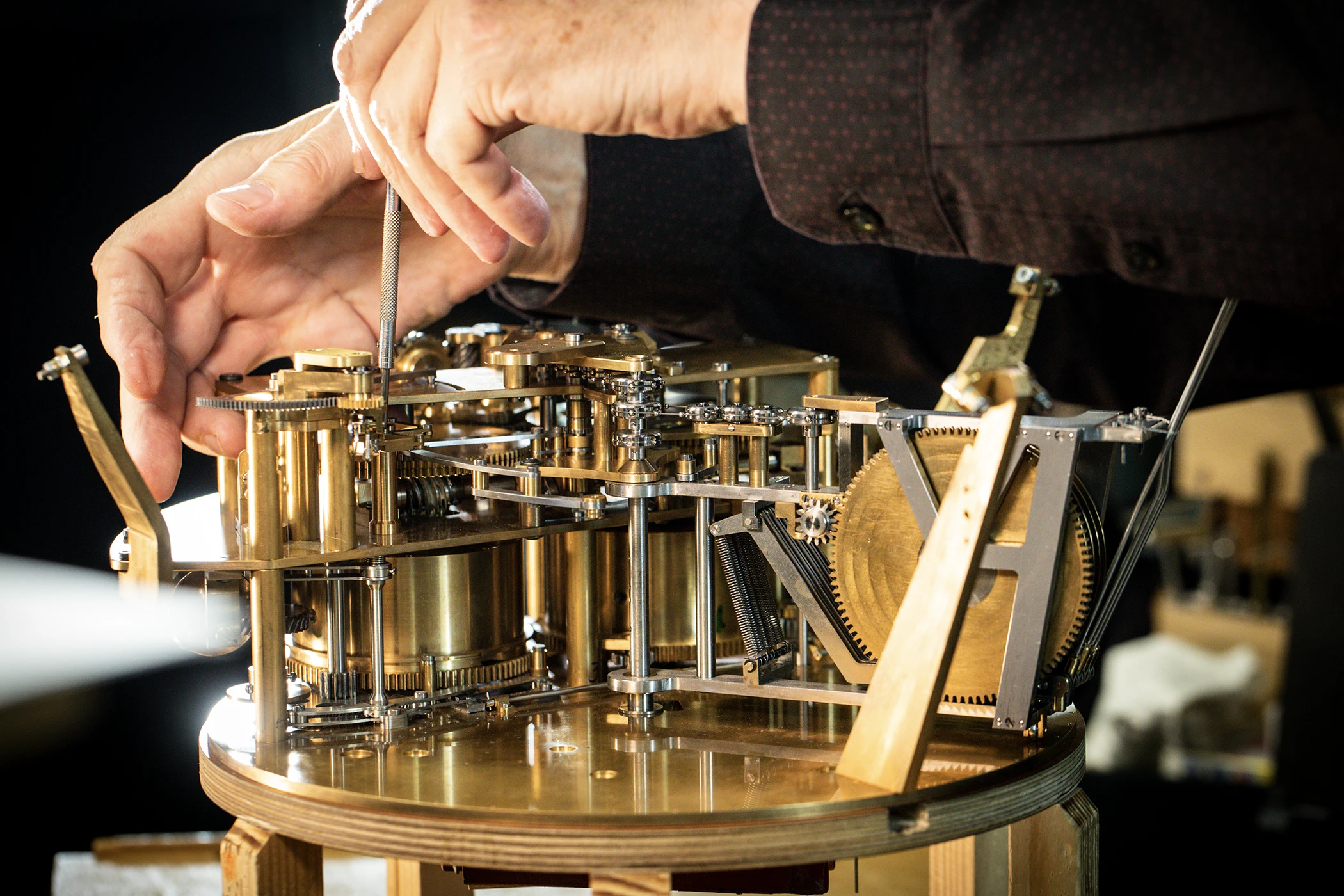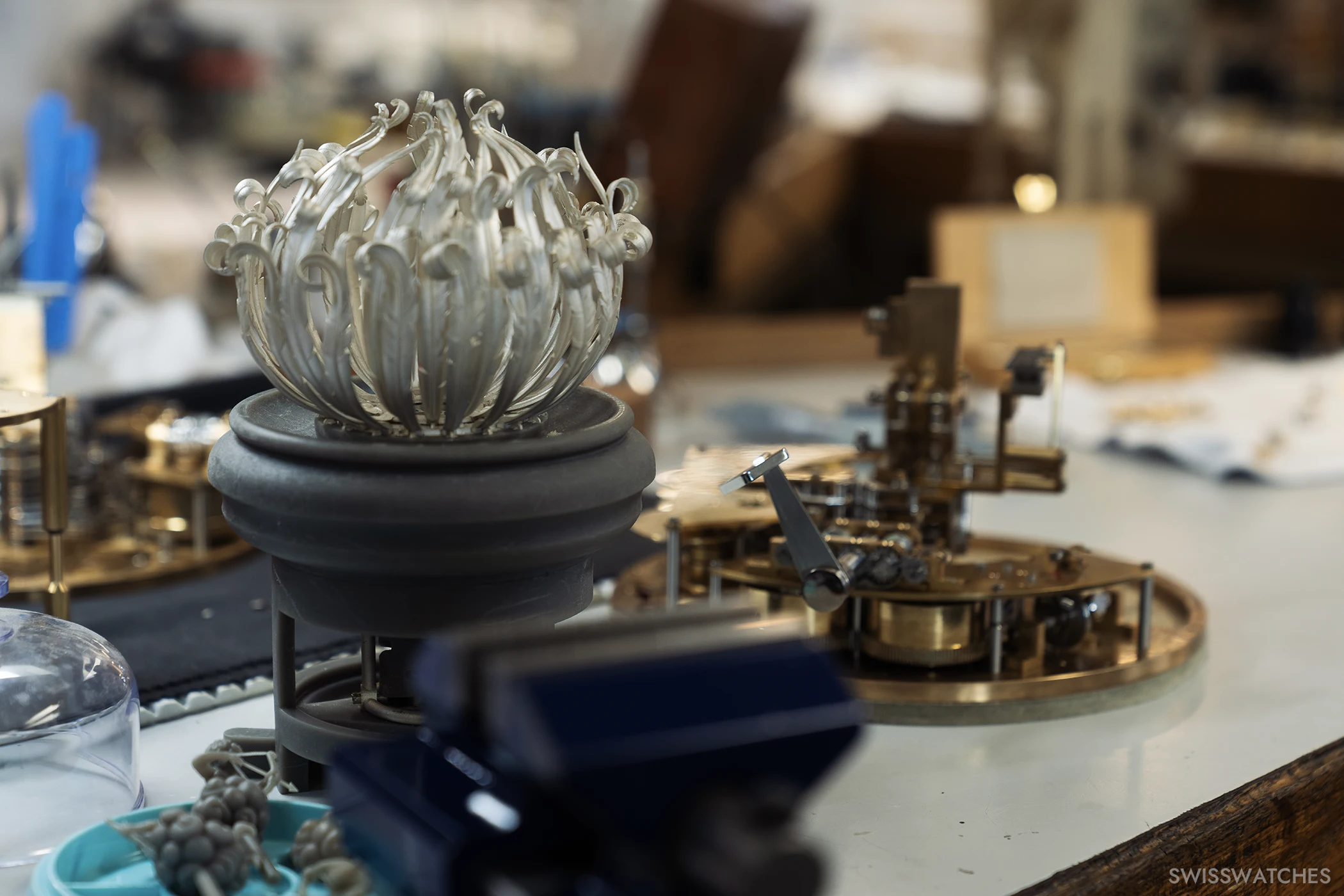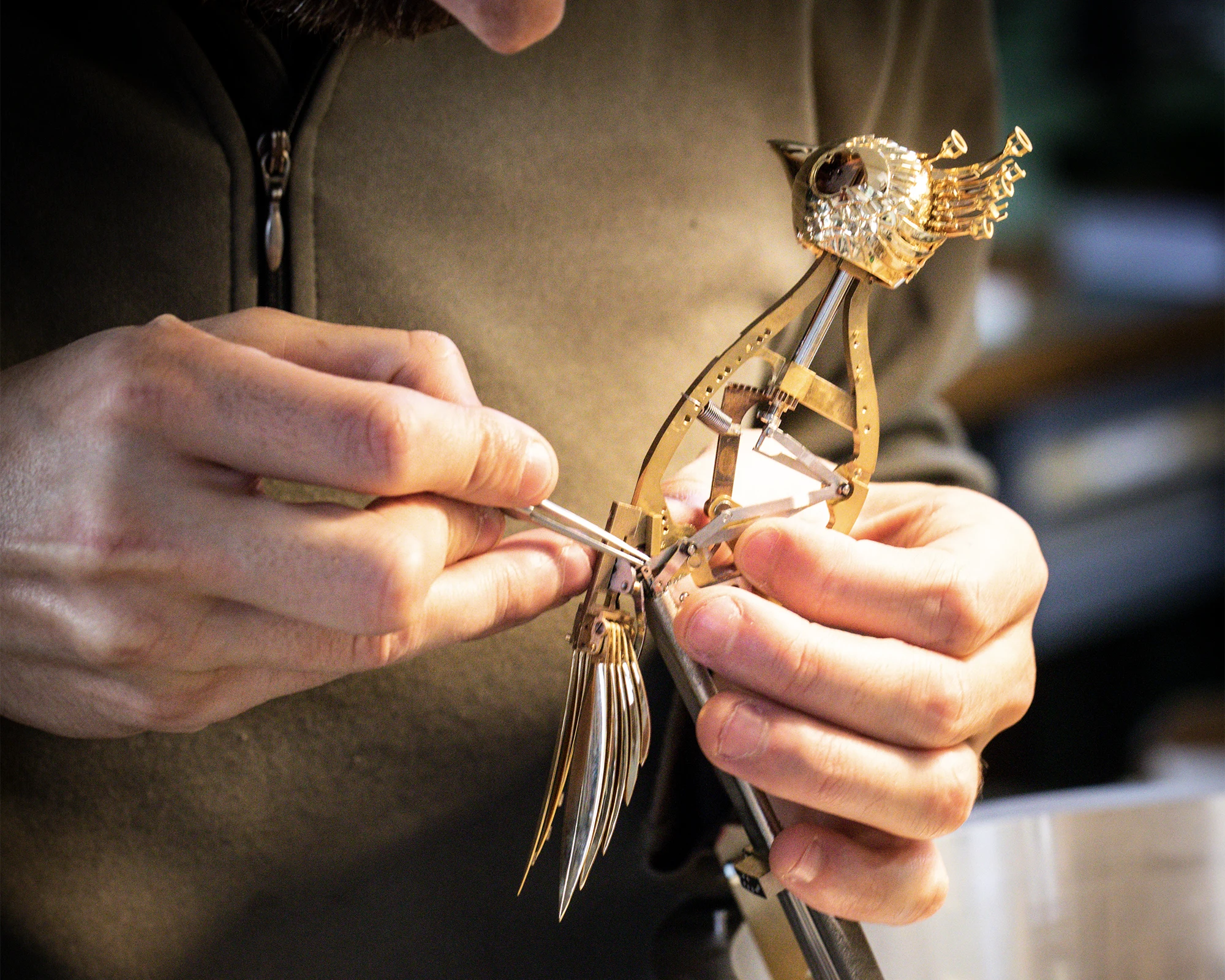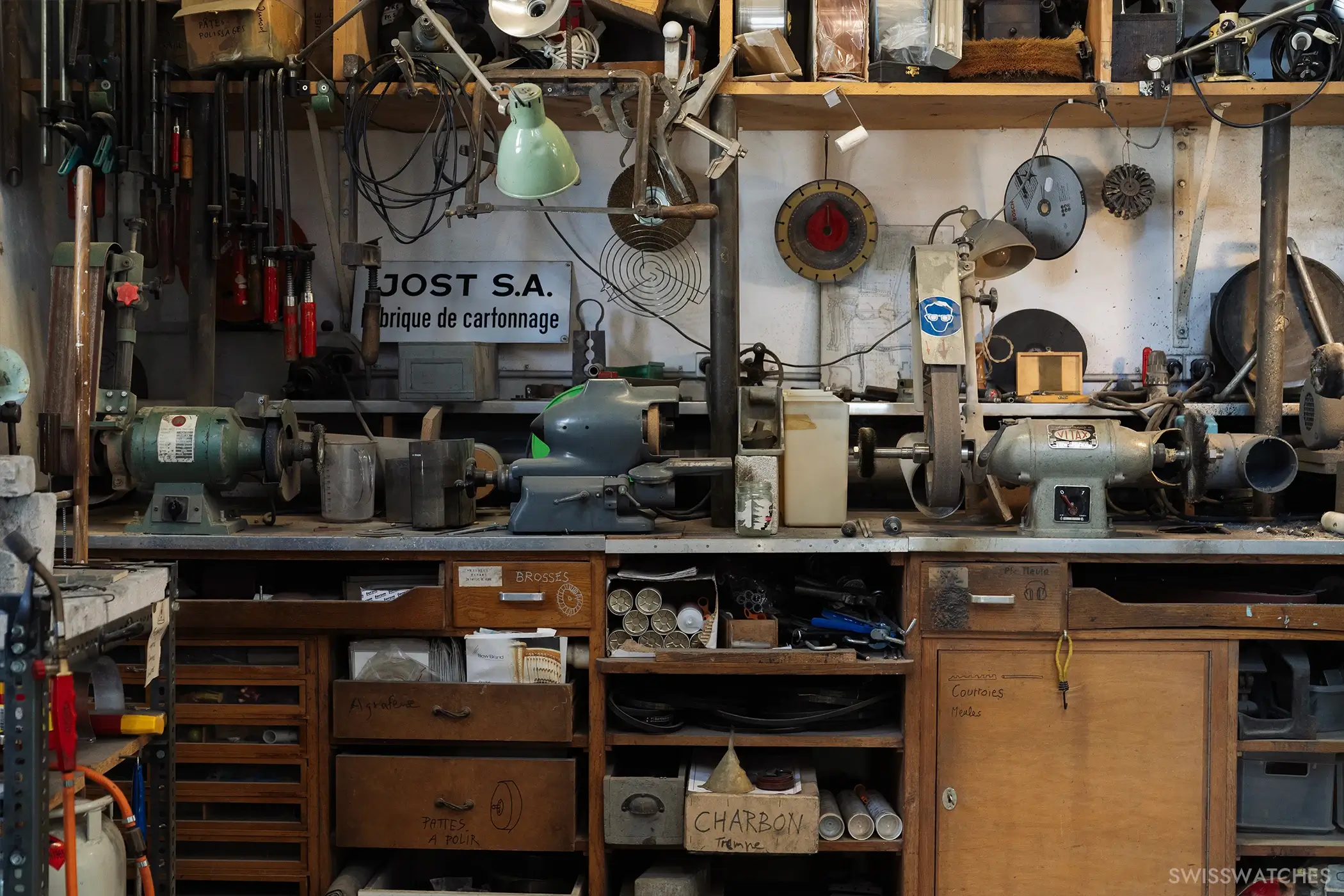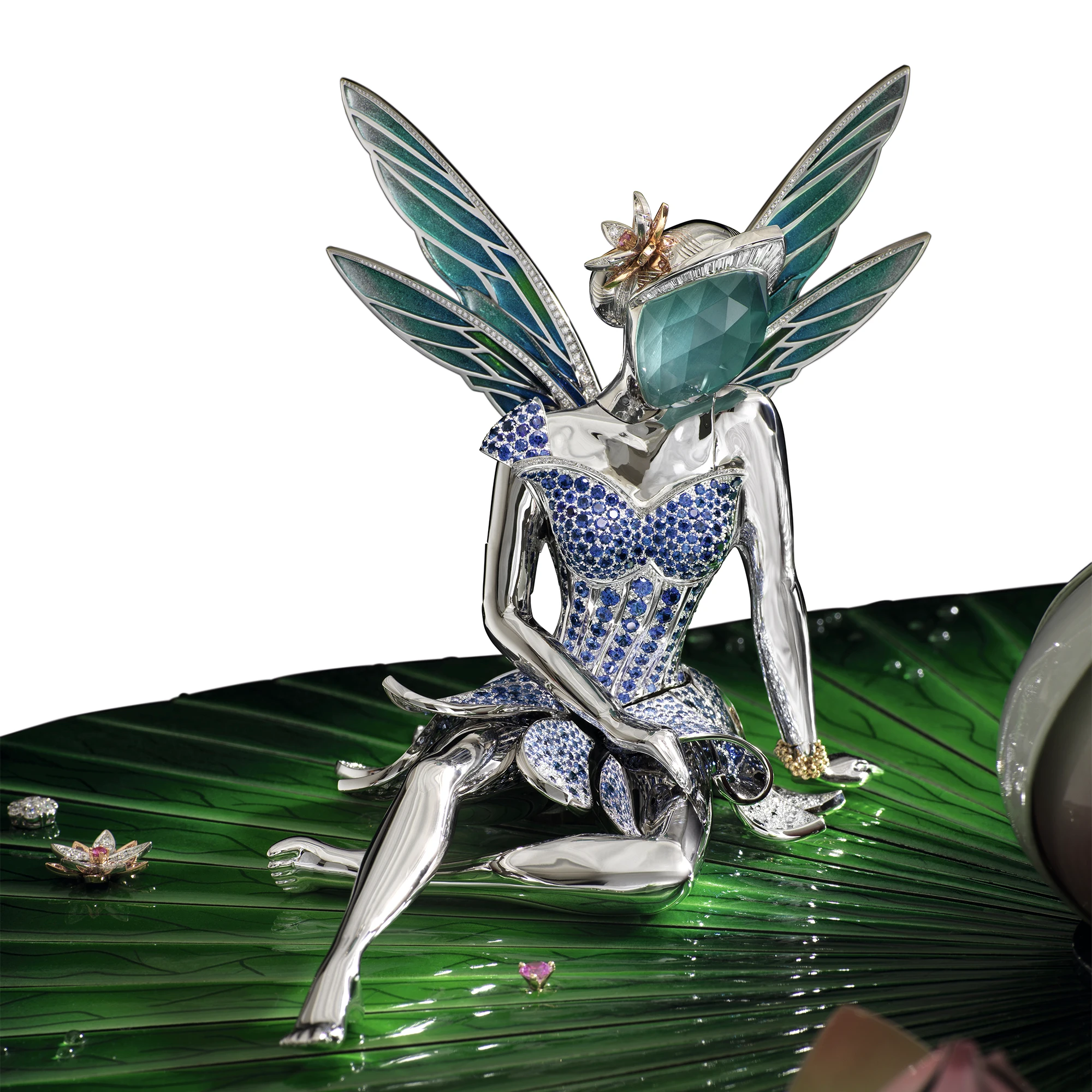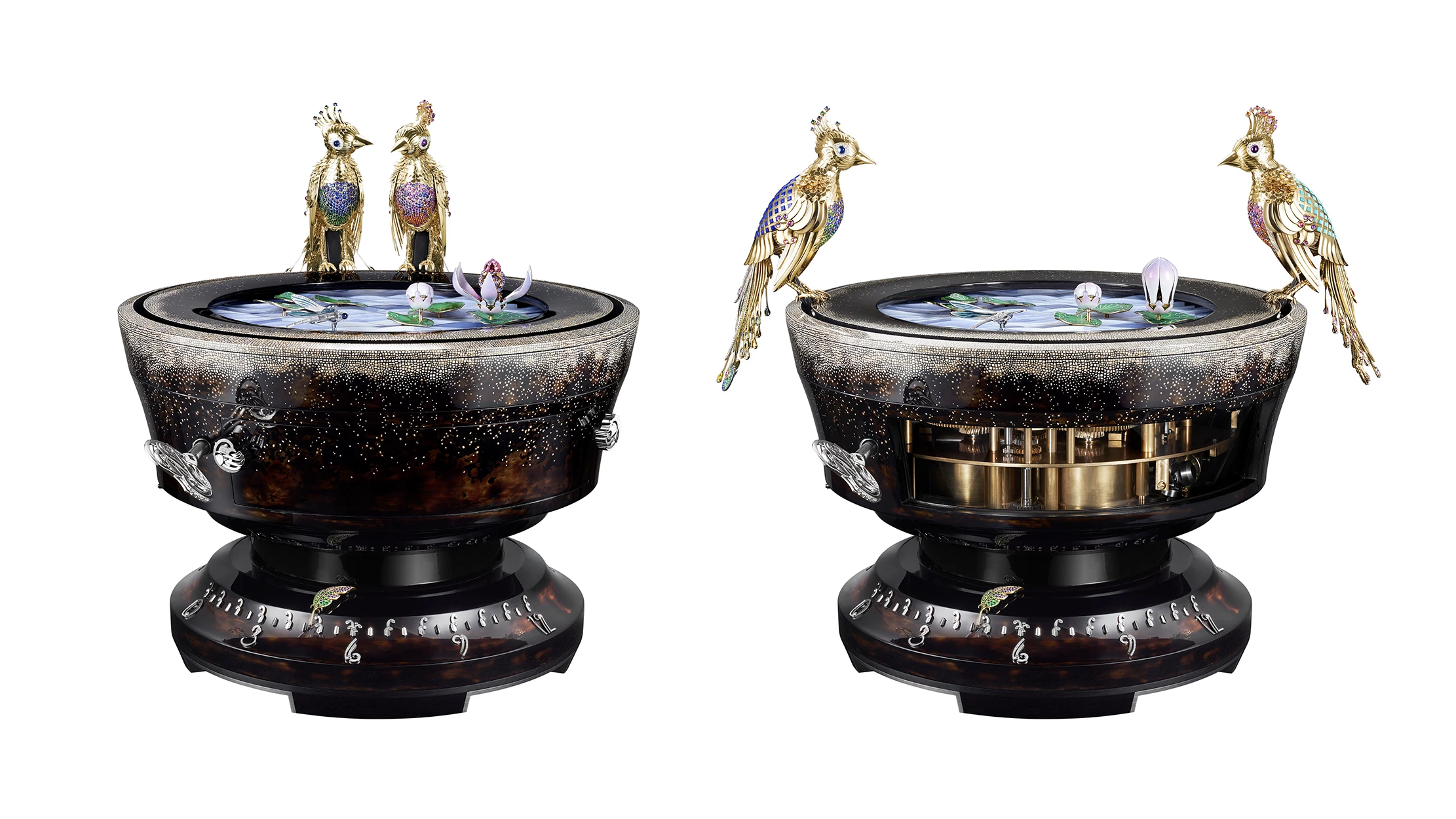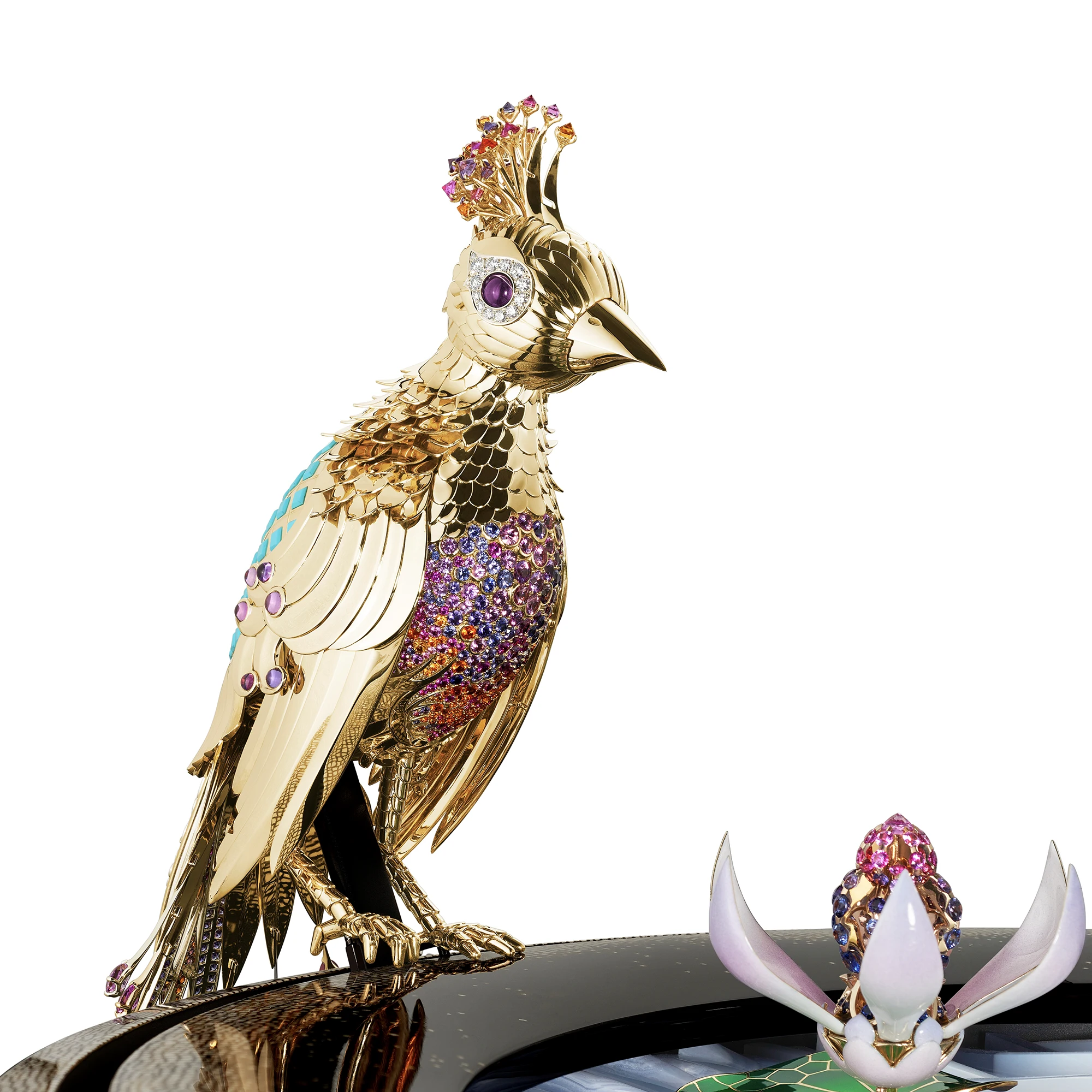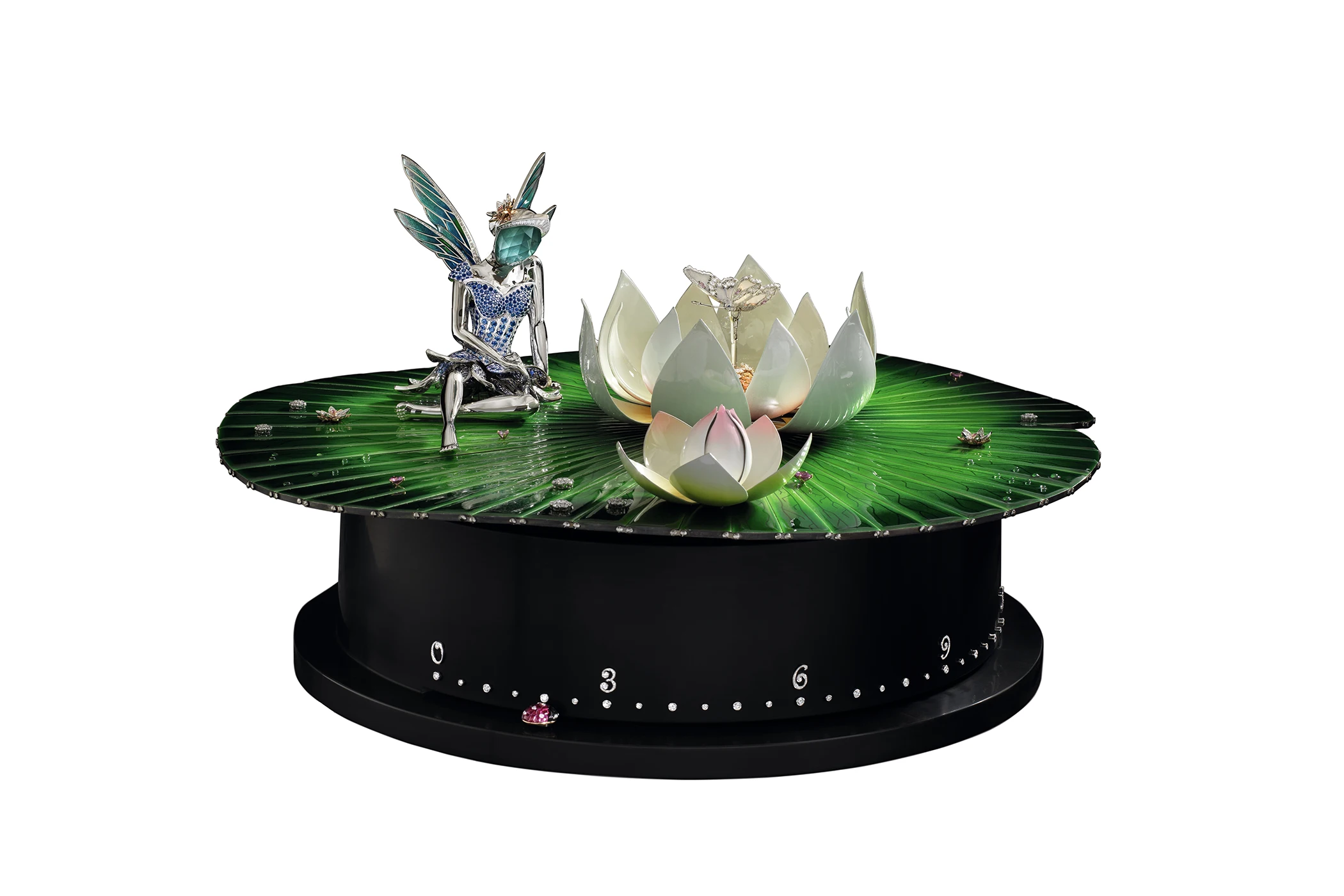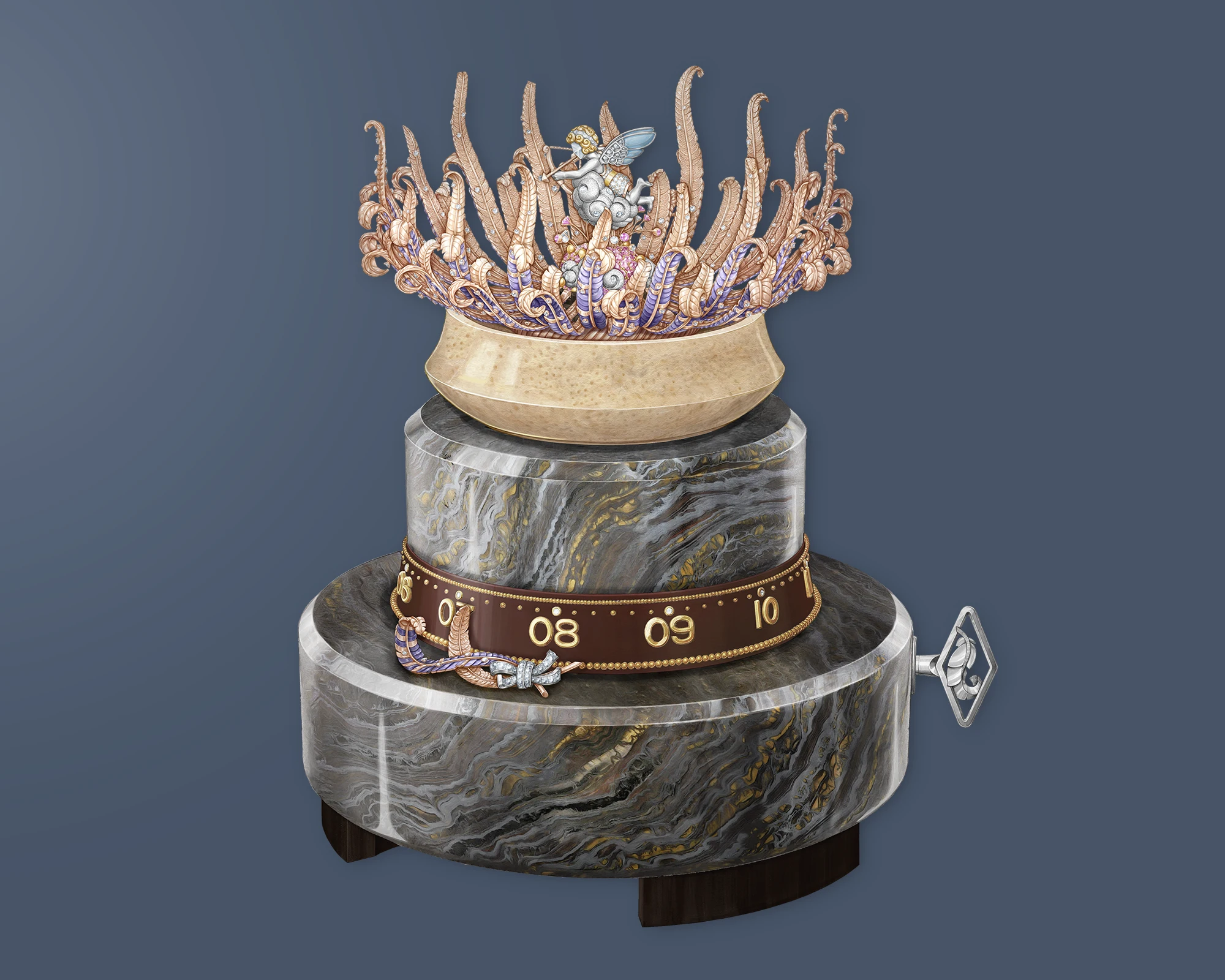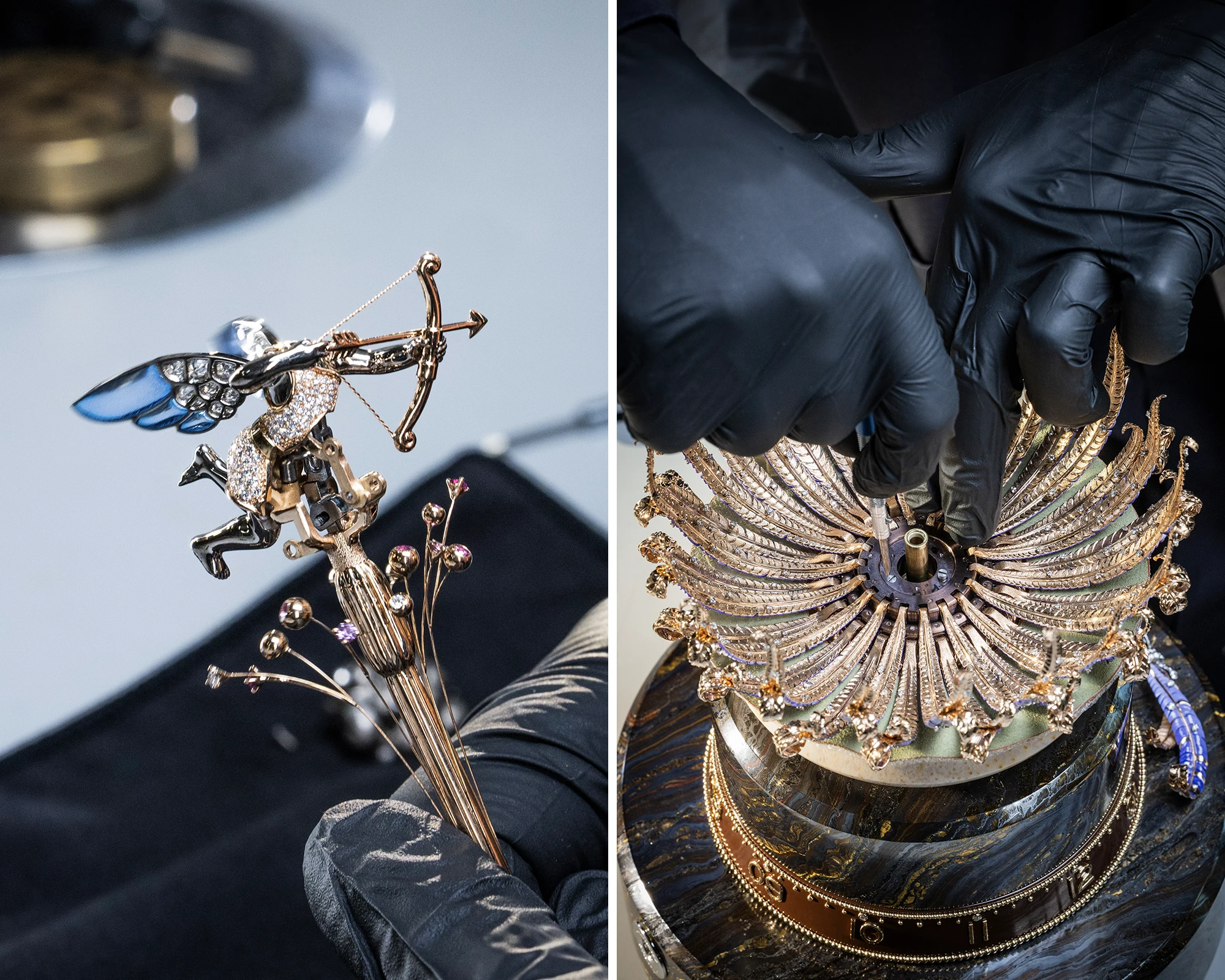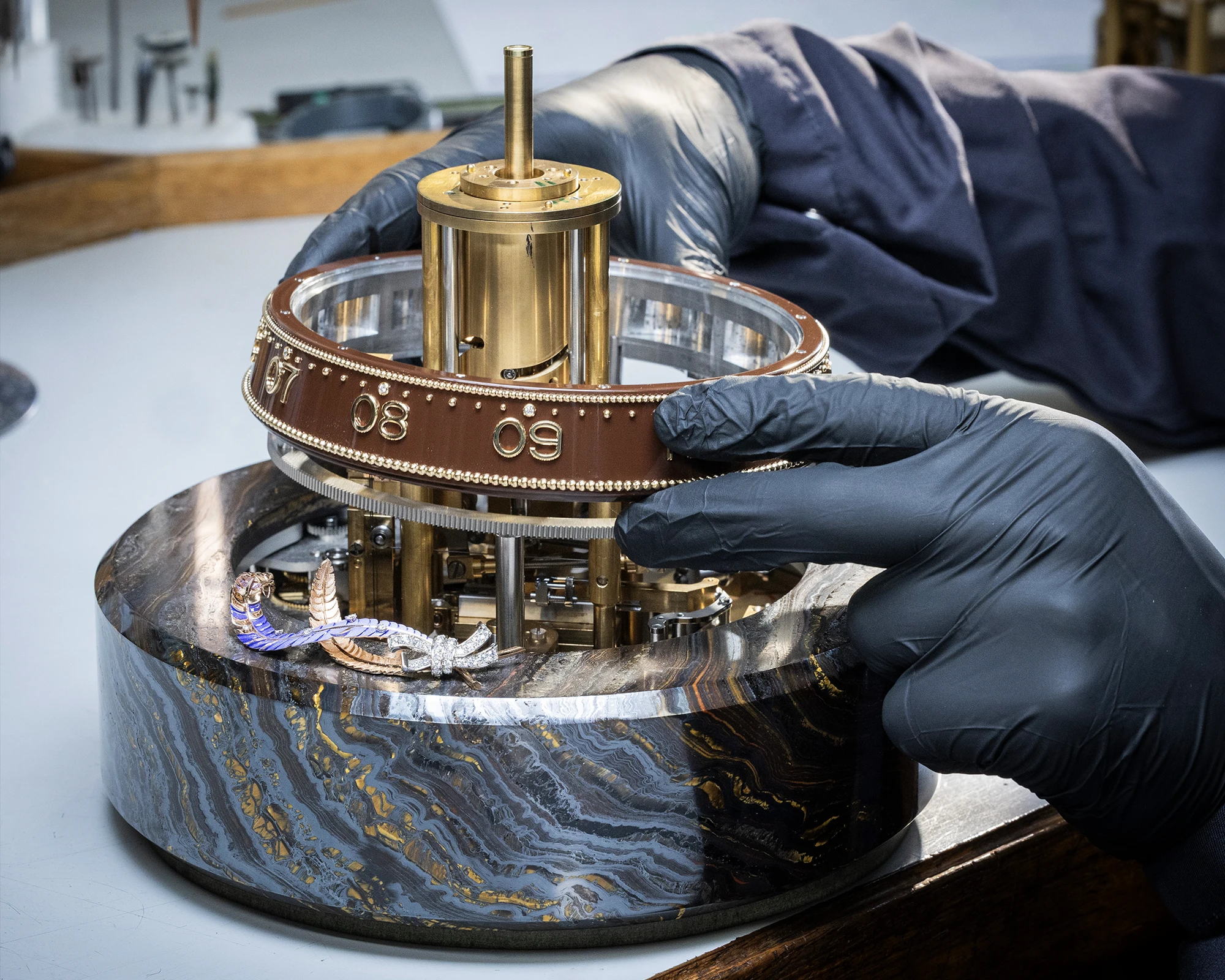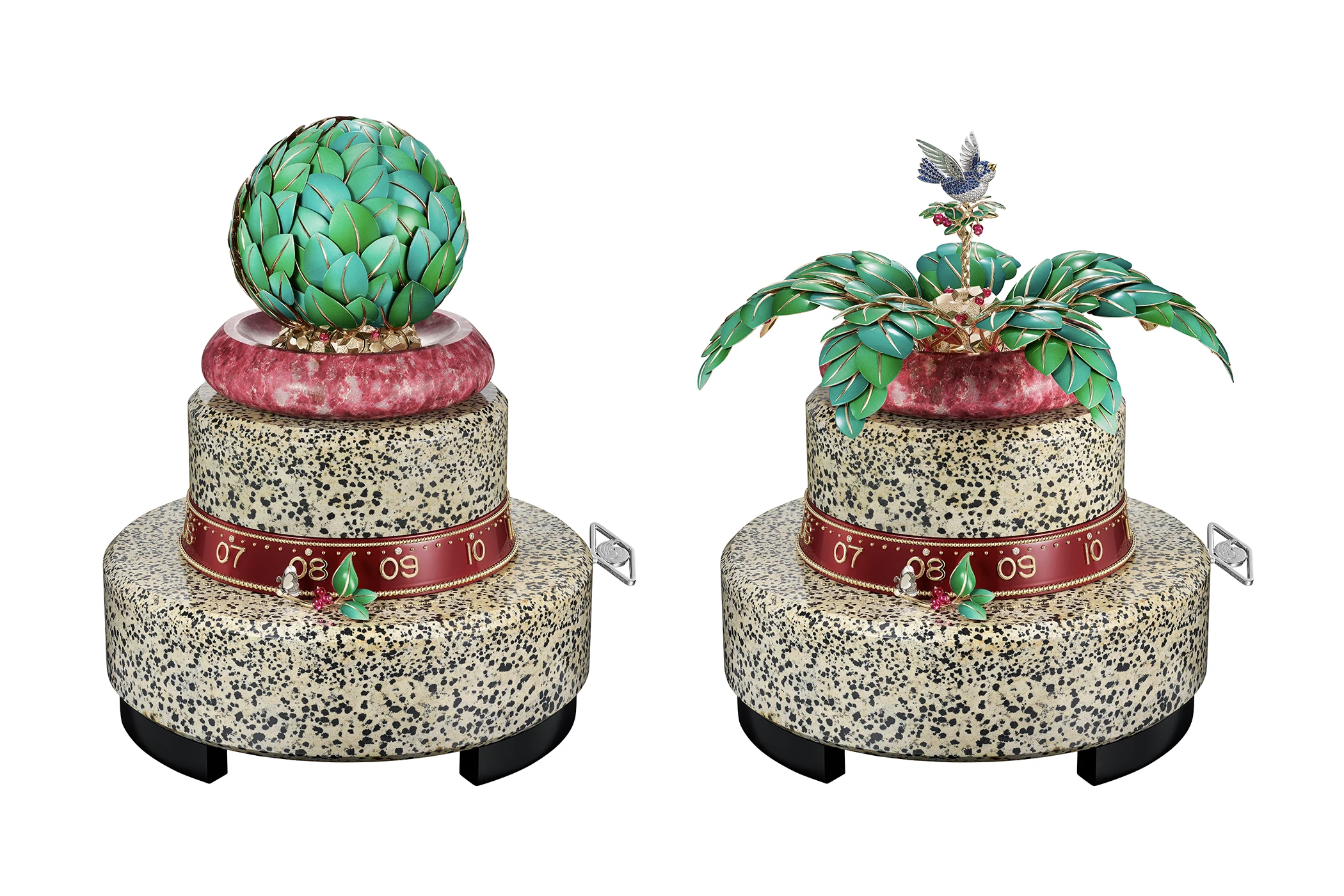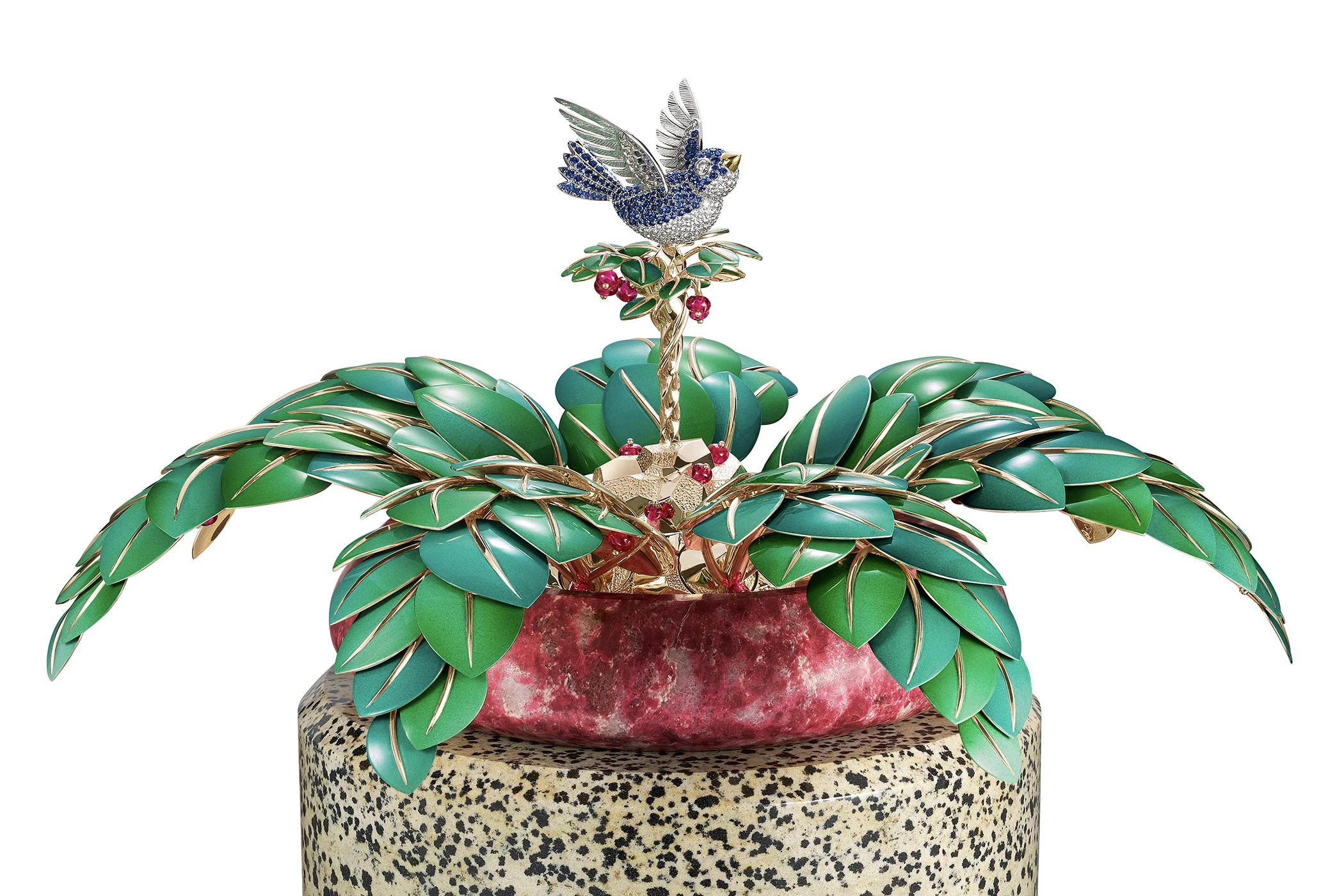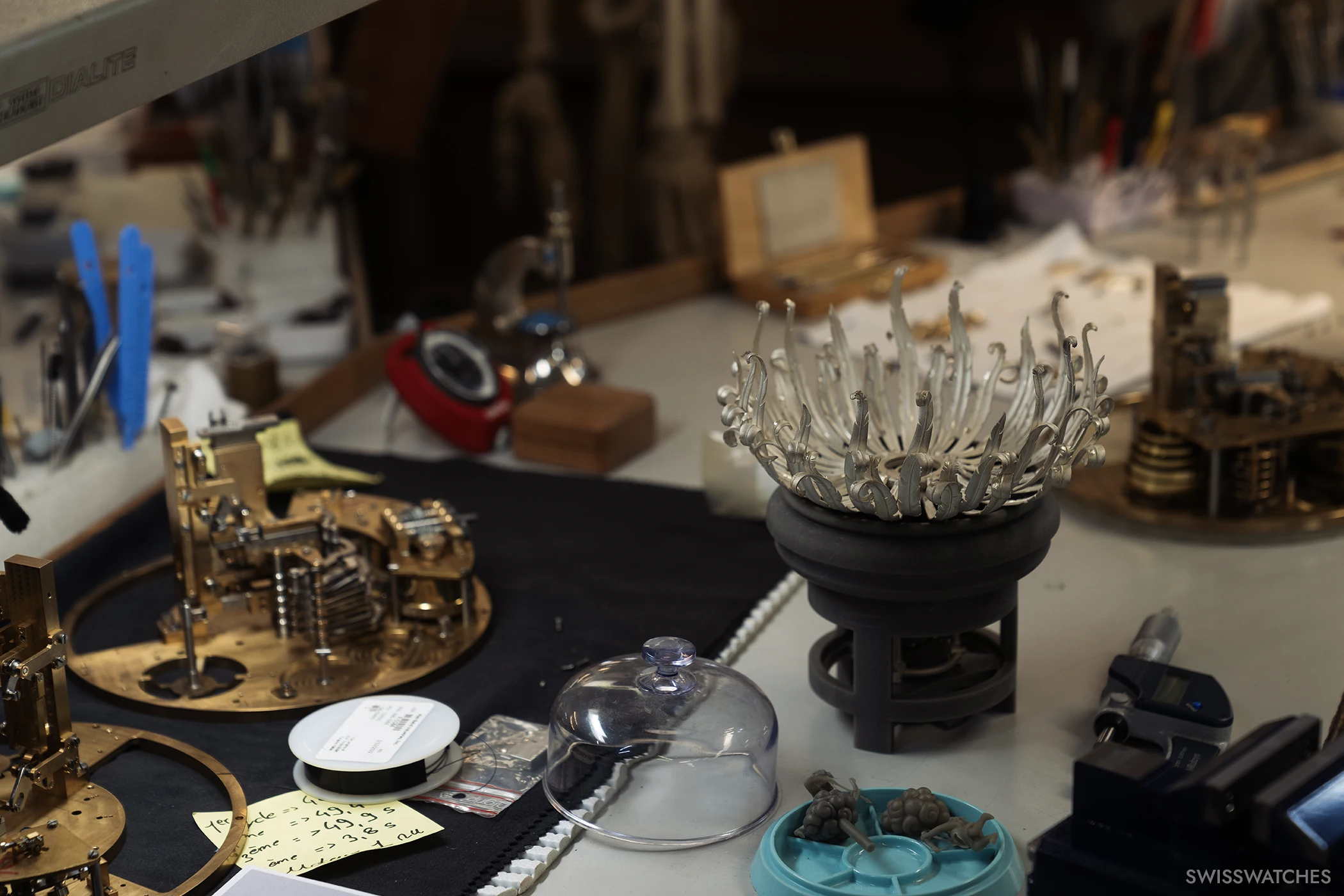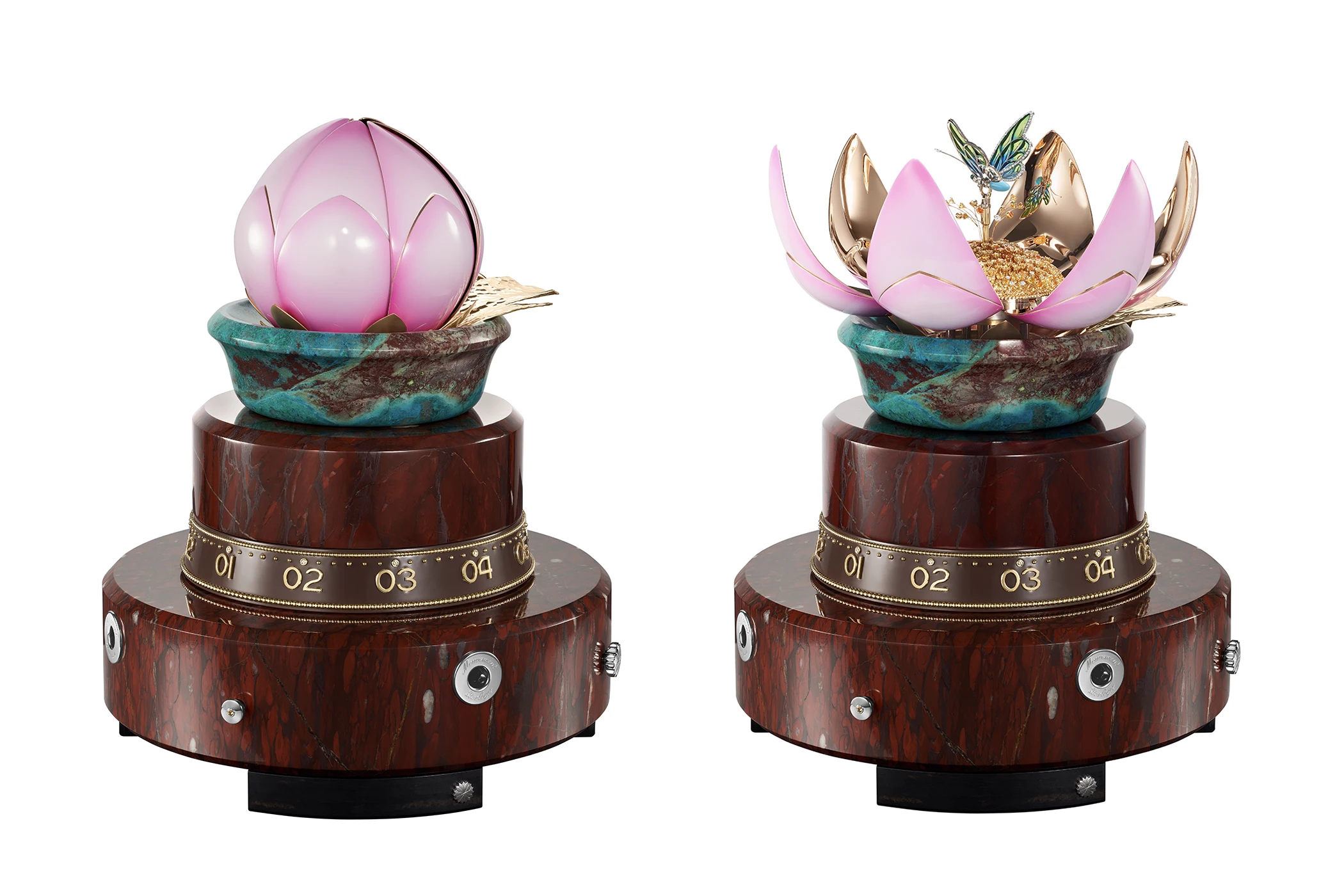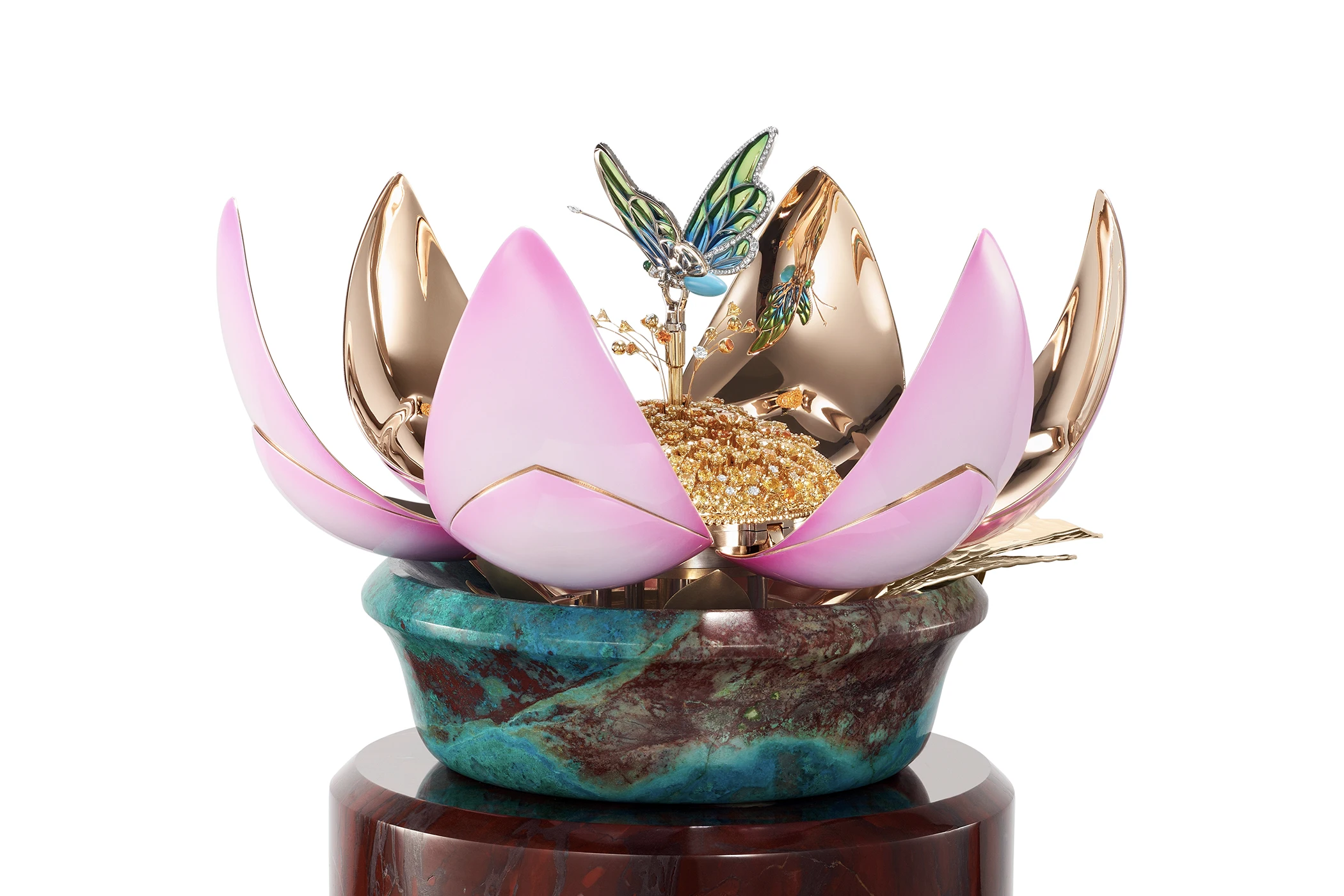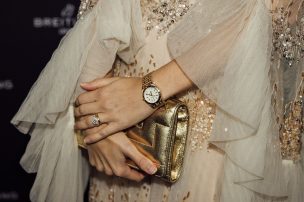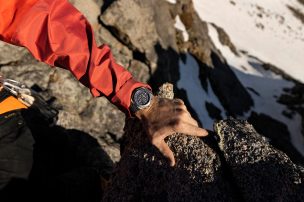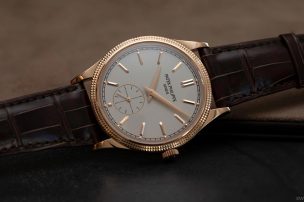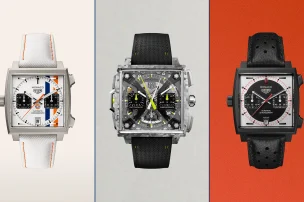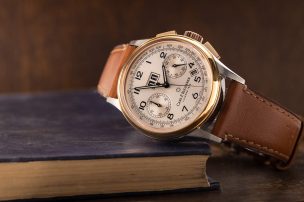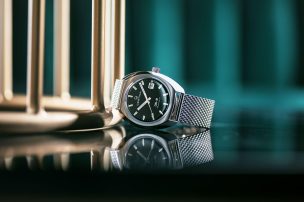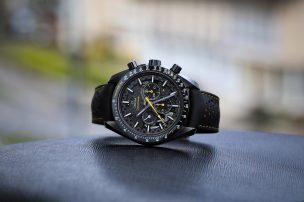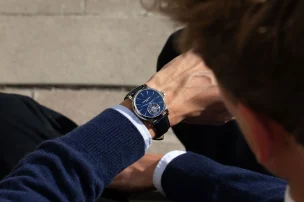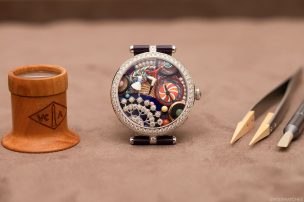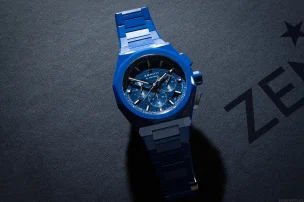
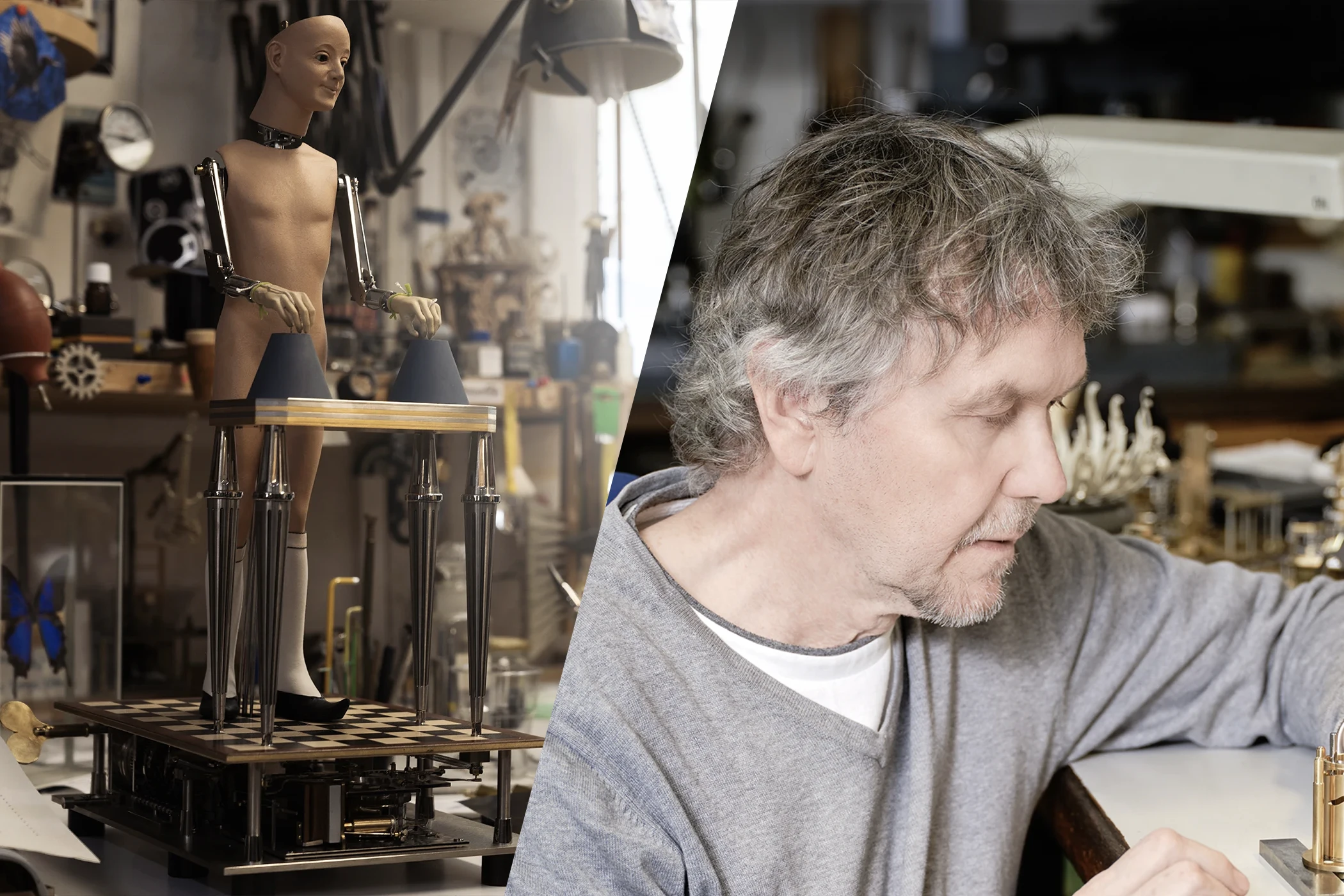
François Junod – The Automaton Maker of Sainte-Croix: From Small Swiss Atelier to Van Cleef & Arpels
Automatons remain something of an obscure phenomenon in our fast, technology driven world of AI and mass production. Even more little-known is the atelier of François Junod, which perches high atop the village of Sainte-Croix in Switzerland’s Jura mountains. However, a twist of fate recently propelled this already renowned workshop yet deeper into the world of watches. Each year, watch and jewellery making giant Van Cleef & Arpels proudly presents an array of visually and mechanically stunning automatons as part of its ‘Extraordinary Objects’ collection; several of which have been created in collaboration with the François Junod atelier.
Swisswatches paid a visit to the atelier earlier this year, gaining an insight into daily life, the diverse range of automata produced here, and, of course, what makes the quietly brilliant automata maker François Junod and his team tick.
Automatons: A brief history
As every well-versed etymologist will be aware, the word ‘automaton’ translates from Ancient Greek to ‘acting of itself’ – and an automaton is just that. With the oldest refrences to automata appearing around 700 BC in the myth of Talos, a story of a bronze humanoid machine and protector of Crete, automatons entered reality in water-powered and later, in 700 CE, wind-powered form. While automatons largely disappeared from Europe during the Dark Ages, they remained prominent and even advanced in the Islamic world, before eventually reappearing in medieval Europe, where, alongside clocks, European cities utilised automata as symbols of both order and power.
During the Enlightenment, automata shifted to becoming status symbols of the elite – a position they hold to this day. One automaton at the forefront of this trend was a name still familiar to many: Pierre Jacquez-Droz. Using many of the components found in mechanical clock and watchmaking to this day, he began to build his first automaton, The Writer, in 1768. The humanoid automaton was carved from wood, measured a mere 70 centimetres, and, perched at a fine mahogany desk, wrote on paper using a handsome goose feather quill that ‘The Writer’ dipped in ink, his gaze mechanically following the movement of his hand.
This ground-breaking construction was achieved using a set of cams and connecting rods with the ability to transform rotary into linear motion, while controlling a letter-forming mechanism of more than 4,000 components. Droz’s automatons soon made their way from Switzerland across European royal courts in the form of dolls, automated music boxes, and mechanical musical instruments, garnering attention, admiration and awe wherever they went.
The Writer, by the way, is François Junod’s favourite creation from Droz’s impressive portfolio. No doubt drawing inspiration from Droz, Junod created an automaton for a private collector in California back in 2010 paying homage to the Russian Romantic poet Alexander Pushkin, which can write out no fewer than 1,458 different poems. Likewise, the Pushkin automaton remains Junod’s favourite creation to date.
The journey to becoming an automaton maker
A former student of micro-mechanics and fine art, Junod’s work has long been steeped in not only technical innovation but also aesthetic creativity, coupled with the heritage that the Swiss automaton makers of the Enlightenment period left behind. Yet it was a something of a fluke that Junod turned to automatons in particular. It was through a friend at secondary school, Frédéric Bertrand, that Junod became acquainted with his father, Michel Bertrand, a French craftsman who came to settle in his village in Sainte-Croix in 1970.
A day in the life of an automaton maker
Lodged in a typically Swiss shuttered house, François Junod’s studio is part workshop, part cabinet of curiosities: large steel hoops dangle from the ceiling of the lofty attic, mannequin heads are stacked on wooden shelves like quiet observers, while classical paintings lean against the walls. The inhabitants of the workshop are a small, quiet group of casually dressed engineers, who work together to create automatons that are produced for clients across Europe, Asia, the United States and beyond.
Everyone in the team, Junod informs me, works on different projects, or in small groups of only two or three people. The team’s occupations vary from working in the development office, where the automata are first designed in 3D, to the machines and 3D printing of the models. Then, of course, there is the task of creating each unique automaton by hand, from giving a humanoid head a hair-do to attaching its arms, to name just one example.
For Junod, the creative process doesn’t begin on a piece of paper, nor on a 3D programme: ‘It takes a certain amount of imagination to visualise an automaton in your head before it’s built,’ explains Junod. ‘I often start with several ideas that I put together, a little like a chef who is preparing a new recipe.’
Technical detail: The inner workings of an automaton
Aesthetics aside, how does it all work? Automatons are marvellous mechanical creations designed to perform actions on their own once set in motion. Typically powered by a spring or a suspended weight, they operate through a clever interplay of components – cams, cranks, levers, linkages, and gears – that convert simple movement into something far more intricate. A rotating crank might drive a cam, which transforms that circular motion into a push, a pull, or a rhythmic oscillation. This energy is passed through a system of linkages and levers, allowing the automaton to perform a series of actions – sometimes charmingly simple, like a figure waving or nodding, and sometimes astonishingly complex, such as The Writer inscribing a script with a quill. Gears help to refine the motion, altering speed or direction as needed. The magic lies in the choreography: by carefully shaping each cam and arranging the components just so, creators can bring lifeless figures to life in mesmerising ways. From decorative novelties to functional wonders like musical clocks, automatons are a testament to the boundless ingenuity and artistry of mechanical design.
Tradition meets technology: A meeting of minds
And how does the great history of the automaton marry with today’s technology? ‘For us, modern technology is a fantastic tool that allows us to spend more time on the creative side,’ comes Junod’s firm reply. ‘It doesn’t take away from the artisanal aspect of our profession, by which we must constantly challenge ourselves and try new ways of designing to achieve greater fluidity in movement.’
Indeed, one of the markers of an impressive automaton is its fluidity – something Junod thus holds in particularly high regard. ‘The most complex part is undoubtedly reproducing the most natural and seamless gestures possible, while maintaining the poetry of the scenario,’ he explains. ‘You need to succeed in making the audience dream within only 40 to 60 seconds of performance, while using cams and gears.’ So, what kind of movement or gesture does he find most fascinating to reproduce in an automaton? ‘Reproducing drawing and writing fascinates me; but an android capable of perfectly reproducing human gestures particularly touches me.’
The power of nature
This magic isn’t only to be found in humans, however, but also in nature. One particularly charming piece by the Junod atelier reimagines a game of cups, in which an automaton performs a magic trick: a tiny blue bird flutters beneath one cup and then promptly vanishes. ‘It’s a favourite for children’, remarks Junod. ‘For my contemporary art creations, which are animated sculptures, I also feel as free as a bird – and with the help of modern technology, I can work with a little less constraint.’
As a former student of Fine Arts, figurative art has always been of preference to Junod, and this has also proved the case for his automatons. ‘Imitating nature is the most essential thing for me,’ he reveals. ‘For the quality of the movements, the whole art of the automaton relies on reproducing the movements of living beings as best as possible by playing on the shape of the cams and their speeds, and – if possible – without the noise of mechanical motors.’
The Fontaine aux Oiseaux automaton
Away from the small mechanical microcosm of the François Junod atelier is the very different world of high jewellery and watchmaking at Van Cleef & Arpels, a maison also known for its passion for nature and mechanics. A faithful partner to the luxury maison, Junod says that he is most proud of the Fontaine aux Oiseaux automaton, produced by the atelier in collaboration with the brand back in 2022. This creation, which is part of Van Cleef’s ‘Extraordinary Objects’ collection, offers a double spectacle: the animation is activated on demand, while the retrograde time display continues throughout the day.
Many will still remember its presentation at Watches and Wonders three years ago, with the audience mesmerised by the rippling water, as though touched by the wind, while bejewelled birds engaged in intricate courtship dance. Junod is also often in attendance at the unveiling of his collaborative works with Van Cleef. ‘It’s beautiful is to see that these automatons attract the general public through the beauty and magic that this moment can offer them. At the show, as soon as the automaton is activated, there is a moment of floating, where everyone allows themselves to be transported.’
‘A true work of art comes to life before our eyes, full of movement and lightness,’ continues an enthusiastic Junod. ‘The beauty of nature is infinitely delicate, and never fails to inspire wonder. For me, the Fontaine aux Oiseaux was a leap into the magic of contemporary automata, as well as a reflection of colossal challenges in the research and development of every detail of the different animations. I felt a lot of emotion during the first tests on the waves and the dragonfly in particular. The object itself, and the impression of life aroused by the birds’ movements, work to provide a truly magical spectacle.’
The Naissance de l’Amour automaton
The atelier first collaborated with Van Cleef & Arpels on the Fée Ondine automaton in 2017, followed by several other creations, including the 2025 Naissance de l’Amour, which we reported on alongside other novelties back in April.
This particular automaton, which cast Junod’s atelier into the spotlight earlier this year, stretches 30 centimetres high. For this romantically designed automaton, Van Cleef envisioned a Cupid figurine emerging from a basket of feathers, sitting atop a Greek column in rose gold surrounded by clouds in white-gold, diamonds, and pink sapphires.
When the automaton is activated, the figurine rotates, while its plique-à-jour enamel wings flutter. While Cupid performs, a mechanical carillon plays a delicate melody. Also a clock in the untraditional sense of the word, the time is shown via a graduated rotating ring using two lacquered ‘feathers’ accented with diamonds that are secured with a diamond ‘bow’.
Materials – and the challenges they present
The automaton itself is placed upon an iron eye base, aka a highly variegated stone with golden streaks. Meanwhile, a bowl created from petrified palmwood gemstone marked the material’s first appearance at Van Cleef & Arpels, holding the basket of feathers. Each material on the masterpiece was meticulously chosen, cut, and polished by in-house experts at the maison, which is well-known for holding precious and rare materials in high regard.
That said, when it comes to materials, the preference at the François Junod atelier generally veers towards the traditional. ‘I generally choose materials that will last,’ says Junod. ‘For example, silicone or latex are not really part of my creations.’ As an admirer of late 18th-century pioneers, modern materials arguably cannot offer the same charm nor enduring appeal as more traditional components. In many of his works, Junod also makes a point not to conceal the more industrial-looking gears, springs, and cogs; rather, they become part of the aesthetic and a tribute to the ingenuity of movement.
Partners in production
How, one might ask, do two such different companies work together in harmony? When it comes to producing an automaton in collaboration with the François Junod atelier, Van Cleef & Arpels begins by communicating the subject and theme to the workshop – for example, in the case of the Naissance de l’Amour, the automaton should tell the story of Cupid flapping his wings in an enchanted décor, above the clouds, on a Greek column. ‘With each new automaton, a specific design is developed to narrate the story,’ explains Junod. ‘In the workshop, we work as best we can to bring these poetic subjects to life with very gentle and controlled movements. For example, this creation [Naissance de l’Amour] features a different opening, so the kinematics on this automaton are unique. The character is also different, with its rotating and wing-beating movements requiring watchmaking precision. We had to manage the weight of each element to create the cams.’
Indeed, Van Cleef & Arpels, which has long embraced motifs of nature, also wanted to place emphasis upon natural movements. ‘There’s always a desire to avoid jerks and unwanted noise within the mechanism,’ says Junod. ‘However, the lightness of movements when working with heavy materials such as gold is pretty difficult to master, and presents a real challenge.’
A melting pot of crafts and ingenuity
Interestingly, the partnership with Van Cleef & Arpels was a lifelong dream of François Junod’s, who would stroll around the Place Vendôme, home of Van Cleef & Arpels, in his youth. ‘I am very grateful for the mutual respect between the atelier and the trust that Van Cleef & Arpels has placed in me. I always follow the orders carefully at the workshop, and together, we have been able to rediscover the kinetic art that exists between mechanics, high jewellery, and artistic crafts.’
Automatons in the 21st century
Despite their finery, not to mention their rarity, these unusual mechanical works of art are not all locked away in faraway mansions, courts and stately homes. Those interested in Junod’s work, for example, can head to CIMA Museum in Sainte-Croix, Switzerland, to see The Angel; his automatons The Walking Man and the Singer’s Bust are situated at the Geneva Arena; the Young Lady with the Perched Bird is housed at the Cheminet school in Yverdon-les-Bains.
But back to the big question: what role can automatons play in the relentlessly fast-paced, tech-driven world we inhabit today – and how can powerful maisons like Van Cleef & Arpels help to facilitate this? Junod is optimistic. ‘It’s a new era that’s returning; a lost skill that’s reappearing,’ he concludes. ‘I never thought my job as an automaton maker would come back to the forefront. I’m delighted that this is happening, after more than 40 years of practicing this fascinating craft. Reviving an extraordinary art from the late 18th century gives real meaning to my quest for perfection.’
